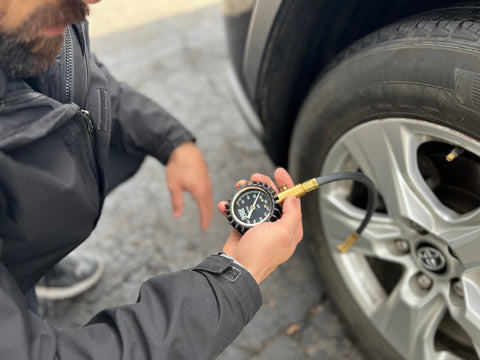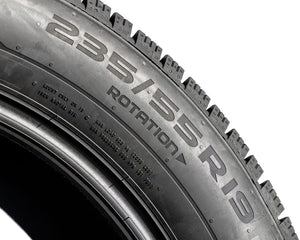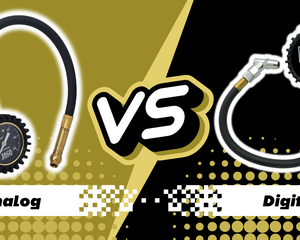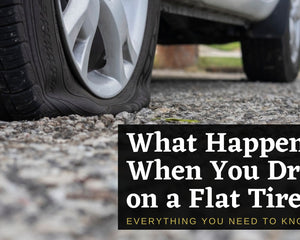
In today's eco-conscious society, fuel efficiency is not merely an abstract concept but a key component that contributes to our daily transportation choices. Achieving improved fuel economy is vital for reducing greenhouse gas emissions, saving money, and optimizing the performance of your vehicle. One often overlooked aspect that has a significant impact on fuel efficiency is the tire air pressure.
The Importance of Fuel Efficiency
By minimizing the amount of fuel consumption, vehicles with high fuel efficiency contribute significantly to environmental sustainability. Furthermore, improved gas mileage equates to financial savings in the long run, which makes the pursuit of better fuel economy a highly practical goal.
Tire Pressure as a Factor in Fuel Efficiency
When examining factors that influence fuel economy, the role of tire pressure often goes unnoticed. However, tire pressure can greatly impact the fuel efficiency of vehicles, making it an essential element to monitor and maintain for any vehicle owner interested in optimizing gas mileage.
Understanding Tire Pressure: The Basics
What is Tire Pressure?
Tire pressure is the measure of the amount of air in your vehicle's tires, usually recorded in pounds per square inch (PSI). It is a vital part of your vehicle's safety and performance, impacting everything from handling and braking to fuel efficiency and tire lifespan.
The Recommended Tire Pressure
The recommended tire pressure for most vehicles typically falls between 30 and 35 PSI. However, the ideal tire pressure can vary depending on your vehicle's make and model. You can find the recommended tire pressure for your vehicle in the owner's manual or on a sticker located on the driver's side door jamb or glove box door.
How to Check Tire Pressure
Checking tire pressure is a simple procedure that can be performed with a tire pressure gauge, a tool that measures the PSI of your tires. For the most accurate reading, it's best to check tire pressure when the tires are cold, as heat can cause tire pressure to rise. Regular checks, ideally once a month or before long trips, will ensure your tire pressure stays at the recommended level. Adding a reliable tire inflator to your tool kit can help to maintain your tires at their ideal pressure, leading to improved fuel economy over time.

The Relationship between Tire Pressure and Fuel Efficiency
The relationship between tire pressure and fuel efficiency may not be immediately obvious. However, this seemingly small detail plays a significant role in the performance and economy of your vehicle.
How Tire Pressure Affects Fuel Efficiency
Correct tire pressure ensures optimal contact between the tire and the road surface. When tire pressure is too low, more of the tire's surface area touches the road, increasing rolling resistance. The vehicle's engine has to work harder to overcome this resistance, leading to increased fuel consumption. Conversely, when tire pressure is too high, less of the tire's surface area touches the road, which can negatively impact handling and braking distance. This highlights why maintaining the right tire air pressure is crucial for balancing safety, performance, and fuel efficiency.
Fuel Efficiency at Different Tire Pressures
According to the U.S. Department of Energy, for every 1 PSI drop in pressure on all four tires, gas mileage decreases by 0.2%. This seemingly small percentage can quickly add up, especially for those who do a lot of driving. For example, if a vehicle's tires are underinflated by 10 PSI, they could be losing up to 2% in gas mileage. That's the equivalent of paying an extra 6 cents per gallon of gas!
Case Study: The Oak Ridge National Laboratory Research
Empirical data supporting the relationship between tire pressure and fuel efficiency can be found in various studies, including one conducted by the Oak Ridge National Laboratory.
Summary of the Research Conducted by Oak Ridge National Laboratory
The research team at Oak Ridge National Laboratory conducted a detailed study that examined the effect of tire pressure on fuel economy at different speeds. They tested a 2009 Toyota Corolla with all four tires at the recommended pressure, then at 75% of the recommended pressure, and again at 50% of the recommended pressure.
Analysis of the Results and Their Implications for Fuel Efficiency
The results showed that as the tire pressure dropped, the fuel economy suffered. With all four tires at 75% of the recommended pressure, the fuel economy was reduced by approximately 2-3% across various speeds. When the tires were at 50% of the recommended pressure, the fuel economy was about 10% lower at 40 miles per hour and 5% lower at 80 miles per hour. This study underlines the fact that maintaining proper tire pressure is not just a matter of safety and performance but also a key determinant in achieving optimal fuel economy.
The Dangers of Underinflated Tires
Driving with underinflated tires is not only detrimental to fuel efficiency, but it also brings several safety risks and can cause unnecessary wear and tear to your tires.
Safety Risks of Underinflated Tires
Underinflated tires increase your vehicle's braking distance and decrease handling responsiveness. This increases the likelihood of accidents, especially in challenging driving conditions. Furthermore, underinflated tires can overheat due to excessive friction with the road. This excessive heat can lead to a higher risk of tire blowouts, which can cause severe accidents, particularly at high speeds.
Wear and Tear Caused by Incorrect Tire Pressure
Incorrect tire pressure, either too high or too low, can lead to uneven tire wear. Underinflated tires tend to wear out more on the edges, while overinflated tires wear out in the center. Both scenarios lead to premature tire replacement, adding unnecessary cost to vehicle maintenance.

How to Maintain Optimal Tire Pressure
Maintaining the optimal tire pressure is a simple yet crucial task for every vehicle owner. You should make a habit of checking your tire pressure at least once a month. However, during extreme weather changes, it's advisable to check more often as temperature fluctuations can significantly affect tire pressure.
Recommendations for Tire Pressure Gauges and Inflators
A reliable tire pressure gauge is a must-have tool for maintaining optimal tire pressure. Digital tire pressure gauges offer high accuracy and are easy to use. Additionally, consider investing in a quality tire inflator, preferably one with a built-in gauge. Brands like JACO offer robust tire inflators with gauges that provide precise readings and help you keep your tire pressure in check.
Tips for Adjusting Tire Pressure for Optimal Fuel Efficiency
If your tires are underinflated, use a tire inflator to fill them up to the recommended PSI. Remember, it's best to check and adjust tire pressure when your tires are cold, as pressure increases as the tires heat up from driving. By maintaining the correct tire pressure, you can ensure optimal fuel efficiency, reduce unnecessary wear on your tires, and most importantly, ensure your safety on the road.
Final Thoughts
The importance of maintaining the correct tire pressure extends far beyond fuel efficiency alone.
Maintaining the correct tire pressure is a simple yet vital practice. It plays a significant role in optimizing fuel efficiency, potentially saving hundreds of dollars each year. Moreover, it contributes to your safety on the road and extends the lifespan of your tires by reducing unnecessary wear.
By practicing proper car maintenance, including maintaining optimal tire pressure, you not only ensure the longevity and performance of your vehicle but also contribute to environmental sustainability. A vehicle with optimized fuel efficiency emits less carbon dioxide, thus reducing your carbon footprint.

What You Can Do
Don't underestimate the power of correctly inflated tires.
Regularly Check Your Tire Pressure
Make it a routine to check your tire pressure at least once a month, and more frequently during significant weather changes. By doing so, you can ensure optimal gas mileage and maintain safe driving conditions.
Invest in High-Quality Tire Inflator Gauges
Invest in a reliable tire inflator gauge to make the process of maintaining optimal tire pressure easier and more accurate. Brands like JACO offer durable and precise tire inflator gauges that will be invaluable tools in your car maintenance toolkit. Remember, correct tire pressure is an essential factor in fuel efficiency, safety, and tire longevity.




